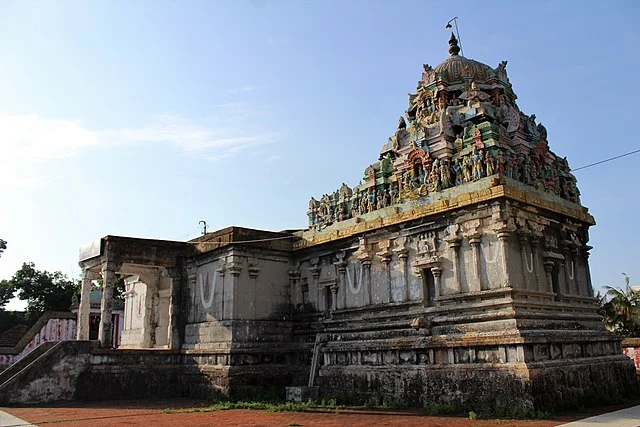Thanjai Mamani Koil is a significant group of three Vishnu temples located in Thanjavur, Tamil Nadu. These temples form part of the Divya Desams, a set of 108 sacred Vishnu temples mentioned in ancient Tamil texts. The Divya Prabandham, composed by the Alvar saints between the 6th and 9th centuries AD, mentions these temples.
Get your dose of History via Email
Historical Background
The origins of Thanjai Mamani Koil date back to the early medieval period, around the 7th and 8th centuries AD. The temples were built during the reign of the Chola dynasty, which ruled much of southern India during this time. The Cholas were known for their devotion to Vishnu and Shiva, and their architectural contributions remain iconic.
Inscriptions found in the temples suggest that they underwent several renovations over the centuries. These renovations were mainly during the reigns of various South Indian dynasties, including the later Cholas, Nayaks, and Marathas.
Architectural Features
The Thanjai Mamani Koil temples reflect the typical South Indian Dravidian style of architecture. Each temple has a small but intricately carved gopuram (gateway tower) and sanctums dedicated to Vishnu. The outer walls display detailed sculptures depicting scenes from Hindu mythology, including Vishnu’s various avatars.
The three temples that make up Thanjai Mamani Koil are:
- Neelamegha Perumal Temple
- Manikundra Perumal Temple
- Narasimha Perumal Temple
Each temple has a unique iconography of Vishnu, represented in different postures. The sculptures and inscriptions also reveal a connection to the Bhakti movement that swept across South India.
Religious Significance
Thanjai Mamani Koil holds deep religious importance for Vaishnavites. It is believed that the Alvar saints visited and sung praises of these temples. Their hymns, known as the Divya Prabandham, highlight the sanctity of this site.
The temples also play a role in the Pancharanga Kshetrams, five Vishnu temples along the Cauvery River, which are considered sacred in the Vaishnavite tradition.
Preservation and Current Status
The Archaeological Survey of India (ASI) and the Tamil Nadu government have undertaken efforts to preserve the temples, given their age and historical significance. However, some parts of the temples show signs of wear due to centuries of exposure to the elements.
Pilgrims and tourists still visit these temples regularly, especially during the Vaikunta Ekadashi festival, an important event in the Vaishnavite calendar. These temples remain a center for both religious and cultural activities in the region.
Conclusion
Thanjai Mamani Koil stands as an important part of South India’s religious and architectural heritage. Its connection to the Alvar saints and the Divya Desams makes it a revered site in the Vaishnavite tradition. The temples’ architectural beauty and historical significance continue to draw scholars and pilgrims alike, contributing to the region’s rich cultural legacy.
Source:

